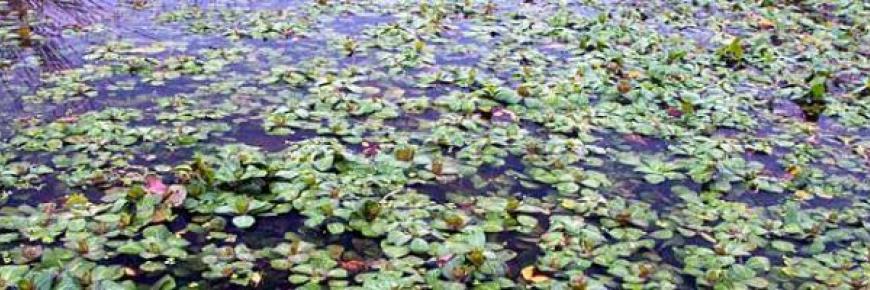Giant hogweed

Giant hogweed ©RPS group Plc
Giant hogweed (Heracleum mantegazzianum) was first introduced to the UK in 1893 as an ornamental plant and is member of the cow-parsley family. Each plant can grow up to 5m in height with flower heads up to 80cm across, producing up to 50,000 seeds per plant which can be dispersed by the wind and water. The plants hollow stem can be up to 5-10cm in diameter and the leaves can be more than 1m wide. It is easy to see why it gets the name “giant” hogweed!
This species is becoming more common across the UK and is notorious because it poses a significant threat to public health. It produces a phototoxic sap, this means that when the sap comes in contact with skin and there is sunlight (UV radiation) it causes severe burns leading to severe blistering. This can occur as quickly as 15 minutes after exposure to the sap. Reaction may cause sensitisation of the area to sunlight that can last for years after exposure. Contact with any part of the plant should be avoided. If you are accidentally exposed to the sap, wash the area thoroughly with soap and cold water as soon as possible. The area should be kept away from sunlight for 48 hours to prevent reaction. If reaction does occur, see a physician, topical steroids can be used to reduce the severity. If sap comes into contact with your eyes, rinse with water, wear sunglasses and seek immediate medical attention.
Giant hogweed also has negative impacts towards biodiversity. Not only does the sap impact animals, this species forms dense colonies which shade out native vegetation. In a similar way to Himalayan balsam, Giant hogweed dies back in the winter leaving bare ground which is susceptible to erosion and increasing flood risks.

Giant hogweed ©GBNNSS
Native to: South-West Asia
Habitat: lowland streams and rivers, waste ground and rough pastures
I’ve found giant hogweed on my land. What should I do?
Care should be taken if you have found this or wish to attempt eradication due to the serious health hazards posed by this species (see above). Keep pets away too, cats and dogs (and other animals) can also get burns from giant hogweed.
As the seedbank can be quite large and remains viable for at least 2 years, eradication needs to take place annually and you must not let it set seed. As seeds are spread by wind and water, cooperation with neighbouring landowners is required, especially if it is found upstream. Seeds germinate throughout the spring so it is best to wait until mid-April to begin treatment. The best time for treatment is before flowering begins before mid-May. After flowering, flower heads need to be cut off and destroyed prior to any chemical treatment. A mix of cutting and chemical treatments could be used to eradicate this species. Non-chemical treatments (i.e. cutting) will not kill the plant unless the root is cut so it may be necessary to repeat throughout the year and is best suited to smaller infestations. Giant hogweed material and infected soil is classified as a controlled waste and should be disposed of accordingly.
I want to report an infestation of giant hogweed
If you are unsure whether you have giant hogweed on your land images can be emailed to NNNSI and we can help with identification. We can also help out with management advice. If you report a sighting to us, we can update our records on the distribution of this species which will can be used to formulate future countywide management practices.
To record a sighting, take a photo, note the date and location and any other additional information such as abundance or size of area.
- Report online: NNNSI@norfolk.gov.uk

